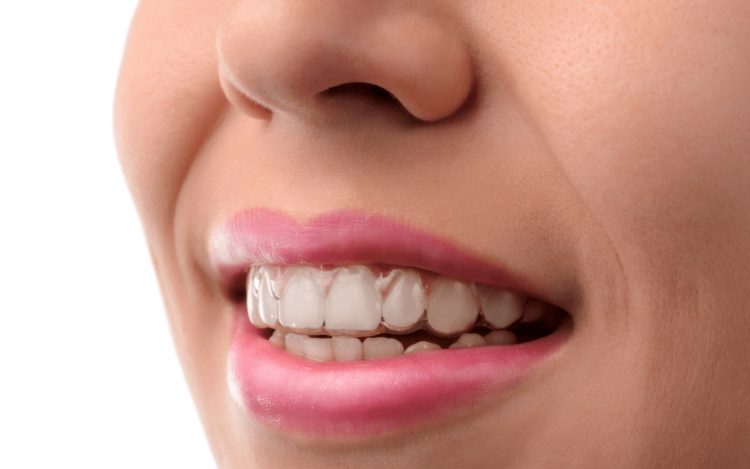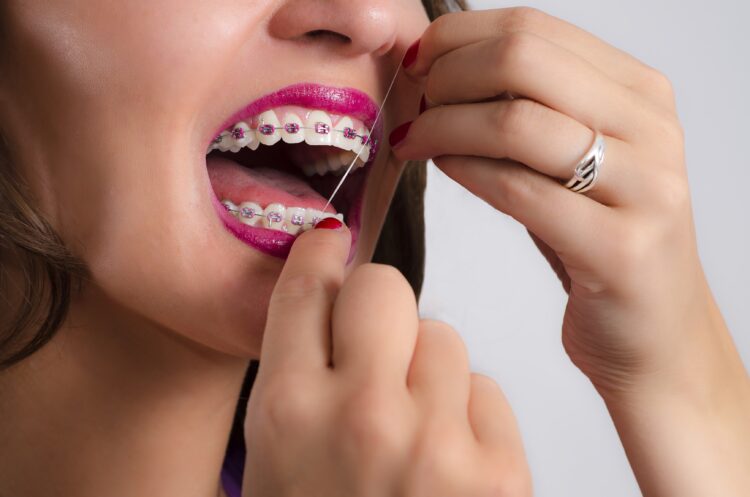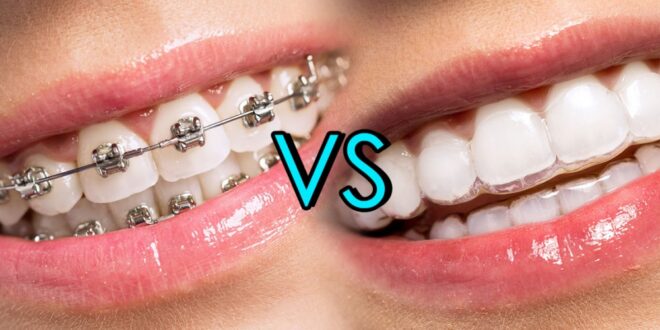Healthy teeth and a consistent bite are nowadays considered to be a prerequisite for the perfect smile and long life of your teeth, in addition to proper tooth brushing.
The loss of only one tooth can completely impair the function of the entire orofacial system. Any replacement is still only a replacement never the original, so every effort should be made to preserve it naturally and to further improve if possible.
A beautiful smile is an imperative of the modern man. Today, beauty is at a high place in the evaluation system and human communication, so a beautiful smile is the best first impression we can make.
If you have healthy teeth and all you need is a correction, then this article is for you, where we will present the difference between brace and Invisalign and the pros and cons of both.
Invisalign

The Invisalign system is, we can safely say, a revolutionary technique. This type of therapy is much simpler and more comfortable for the patient. Nothing is visible on the teeth – the foils are completely transparent and therefore meet high aesthetic criteria. This is especially important for adult patients who are not allowed by the profession to wear a steel fixed brace. There are also no restrictions on the choice of foods to eat, as is the case with patients using other methods. Another great advantage is that the check-ups do not have to be done once a month, but can take several months between visits to the dentist.
Is that the right choice for me?
They are designed to correct light, medium and heavy orthodontic cases. In addition to being aesthetically acceptable because they are not noticeable, they bring with them many other benefits. They are significantly easier to maintain. Better oral and dental hygiene because they are not fixed. The forces acting on the teeth are distributed over the entire surface of the tooth and are weak but constant forces that are better for moving the teeth because they damage the periodontium less. Whether your case is right remains to be determined after a thorough analysis.
How long is the treatment/therapy?

In most cases, the treatment lasts 3-9 months. For best results, you must be as committed to the treatment plan as possible, which means that it is worn as much as the dentist determines. To achieve results, you need to wear a minimum of 16-18 hours a day, but for best results Smile Craft Dental suggests you wear it around 22 hours per day.
Can I see in advance what this would look like in the end?
Yes. Based on the jaw print, one can make a model of what it looks like now and another model of what it will look like at the end of the treatment. It is a visualization made of plastic where one can see what is expected from therapy. Fully computerized and software accurate, you can see the exact plan and predict the results that clearly show the expected result after the scheduled time.
Can you eat with them?
It may but is not necessary. It is easy to remove and has no restrictions on food and drink. Remember to just put them back on after the meal.
What are the disadvantages/limitations?
It is not possible to correct the complex deformities of the jaw, nor to correct the bite.
Brace

A brace is a very effective device that is placed with the purpose of straightening the teeth. It is worn constantly and with the regular control and expertise of the dentist and has very successful results. There are several types:
- The classic one is made of stainless metal and other materials. It is characterized by gums that can be in different colors, so they are extremely interesting for children. More about children’s dentures, you can check at abcchildrensdentistry.com.
- A white, aesthetic brace, the locks of which can be made of ceramics, zircons, or other materials with the aim of having a milky white color, the color of which is the tooth itself. Adults are increasingly opting for this type because it is minimally conspicuous. We do not recommend white wires that are increasingly popular with this type, because this wire is elastic and when stretched, the white color is damaged and in these places, you can see the classic gray color of the wire. Your intention to make your teeth aesthetically appealing will have a completely different outcome, which is the impression that your teeth are dirty and uncleaned from food.
- Self-ligating braces are those that use a slightly stronger force. When no other method can help to correct tooth irregularities, this is the right solution. Checkups are very rare.
- Lingual braces are the special types whose locks are placed on the inner surface of the tooth so that rarely anyone will notice that you have something in your mouth. They are difficult to maintain and thorough tooth brushing is required with a regular and interdental brush after each meal.
Advantages and disadvantages

The main and undeniable advantage of wearing it is its efficiency. Continuous wear and force directed at the tooth cause the teeth to move, and it depends on the dentist’s expertise whether the tooth is placed in the right place. Depending on the case, with regular checkups, the teeth can be straightened in a year, a year and a half.
A less pleasant fact of wearing is the discomfort you feel in your mouth. Often, wounds on the cheeks can occur. The good news is that at some point it stops, and until then, there is wax (like a little piece of plastic) that sticks to the lock, making its sharp edges round.
The downside is also that a growing number of dentists are suggesting that one of your teeth be extracted to make room in the jaw for proper placement of other teeth.
When it comes to orthodontic treatment, there are alternative options available beyond traditional braces and Invisalign. These alternatives cater to individuals seeking effective teeth straightening solutions while considering aesthetic concerns. Lingual braces, for instance, utilize brackets and wires placed on the backside of teeth, ensuring minimal visibility. Ceramic braces, on the other hand, offer tooth-colored or clear brackets, blending in discreetly with the natural teeth. Clear aligner systems, including ClearCorrect and SmileDirectClub, employ a series of custom-made clear aligners to gradually shift teeth into alignment. In certain cases, retainers can address minor alignment issues, while porcelain veneers offer cosmetic improvements for individuals with primarily aesthetic concerns. Consulting with a dental professional is crucial to determine the most suitable treatment option, tailored to individual dental needs and desired outcomes.
Conclusion:
Now that you have complete insight into how it works, you can probably figure out the right solution for you. But surely the dentist has the final word, who will determine what suits you best.
Also, get a good look and go to a lot of dentists, inquire about their working methods, pace, prices and possible hidden costs.
 Hi Boox Popular Magazine 2024
Hi Boox Popular Magazine 2024



